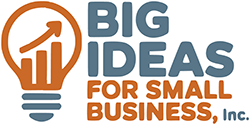 While your 2021 tax return hasn’t been filed and likely won’t be for many months, it’s not too soon to be thinking about taxes for 2022. Congress is still working on proposals that could impact taxes for the coming year. But there are some things we know for sure. Various cost-of-living adjustments announced by the IRS may influence your tax planning for the coming year. The following business-related items aren’t just numbers; they’re key benchmarks for your benefits offerings to employees, your budget, and more.
While your 2021 tax return hasn’t been filed and likely won’t be for many months, it’s not too soon to be thinking about taxes for 2022. Congress is still working on proposals that could impact taxes for the coming year. But there are some things we know for sure. Various cost-of-living adjustments announced by the IRS may influence your tax planning for the coming year. The following business-related items aren’t just numbers; they’re key benchmarks for your benefits offerings to employees, your budget, and more.
Tax rates
The tax rates for 2022 are unchanged (unless Congress makes any last-minute adjustment). C corporations continue to pay a flat 21%. Owners of pass-through entities pay tax on their business income on their personal returns. The amount of tax depends on the owner’s tax bracket, and all tax brackets have been adjusted for inflation. This means you can have higher taxable income without necessarily being pushed into a higher tax bracket.
Similarly, the favorable tax rate on net capital gains and qualified dividends depends on taxable income, the amount of which has also been adjusted for inflation and depends on the owner’s filing status.
Deductions
Some key write-offs you may qualify for in 2022 are slightly greater than in 2021.
Qualified business income (QBI) deduction. The full QBI deduction—a personal deduction for owners of pass-through entities based on their business income—can be claimed as long as taxable income in 2022 does not exceed $340,100 for married filing jointly or $170,050 for other filers (up slightly from 2021). The QBI deduction phases out for taxable income of $100,000 more for joint filers and $50,000 for other filers. Watch pending legislation for possible limits on eliminating the deduction for high-income owners.
First-year expensing. The dollar limit on deducting the cost of machinery, equipment, and other eligible property instead of depreciating it over a number of year or using bonus depreciation is capped at $1,080,000 (up from $1,050,000 in 2021). The deduction phases out dollar for dollar once investments in qualified property for the year exceed $2.7 million; no deduction is allowed if investments exceed $3,780,000 (up from $2.62 million, and $3,760,000, respectively in 2021).
Energy-efficient buildings. The maximum deduction for an energy-efficient commercial building in 2022 is $1.88 per square foot (or $0.63 per square foot for a partial allowance). These amounts are up from $1.80 and $0.63 respectively.
Other items
Various other items have been adjusted for inflation in 2022.
Qualified small employer health reimbursement accounts (QSEHRAs). Small employers (those exempt from the employer mandate under the Affordable Care Act) may choose to reimburse employees for their individually-obtained health coverage. If they follow QSEHRA rules, the maximum reimbursement for 2022 is $11,050 for family coverage, or $5,450 for self-only coverage (up from $10,700 and $5,300, respectively, in 2021).
Cash method of accounting. Various tax rules, including use of the cash method of accounting and being able to treat inventory as non-incidental materials and supplies, depend on meeting a “gross receipts test.” For 2022, it means having average annual gross receipts in the 3 prior years not exceeding $27 million (up from $26 million in 2021).
Excess business losses. Noncorporate taxpayers (i.e., owners of pass-through entities) cannot deduct their share of business losses in excess of a set amount. For 2022, this is $540,000 for joint filers and $270,000 for other filers. Losses that are not deductible because of this limitation become net operating losses, which are deductible in future years as offset to up to 80% of taxable income.
Cafeteria plans. Employers may have benefits plans to enable employees to pay health costs and dependent care costs on a pre-tax basis. The health FSA contribution by employees in 2022 is capped at $2,850 (up from $2,750 in 2021) and the permissible carryover of unused 2022 contributions is up to $570 (if the plan allows for carryovers). An employee’s contribution to dependent care FSAs or employer contributions to dependent care plans for 2022 is limited to $5,000, an amount fixed by law. The $10,500 that had been permitted for 2021 has not been extended (but check last minute legislation).
Transportation fringe benefits. If employers offer this tax-free break—free parking, commuter passes, or van pooling—the monthly limit in 2022 is $280 (up from $270 in 2021). Remember, employers may not deduct the cost of these fringe benefits even though they’re tax free to employees.
Small employer health insurance credit. Employers may be eligible for a tax credit up to 50% of the premiums they pay for this insurance if they meet certain conditions. One is the amount of payroll. The dollar limit on average annual income of employees for purposes of determining eligibility for the credit in 2022 is $28,700 (up from $ in 2021).
Retirement plans
When it comes to qualified retirement plans, the limits on contributions and benefits for 2022 have been adjusted for inflation. Some key limit changes include:
- Profit-sharing and SEPs: $61,000 (up from $58,000 in 2021).
- 401(k) salary reduction contributions: $20,500 (up from $19,500 in 2021). Catch-up contributions for those age 50 or older by the end of the year are capped at $6,500 (unchanged).
- SIMPLE IRA salary reduction contributions: $14,000 (up from $13,500 in 2021). Catch-up contributions for those age 50 or older by the end of the year are capped at $3,000 (unchanged).
- Defined benefit (pension) plans: the limit on benefits (the contribution for which is figured actuarially) is $245,000 (up from $230,000 in 2021).
Final thought
Again, these aren’t just numbers; they’re important information for decision-making in your business. Review with your CPA or other tax professional the numbers for 2022 so you can adopt strategies to follow.


